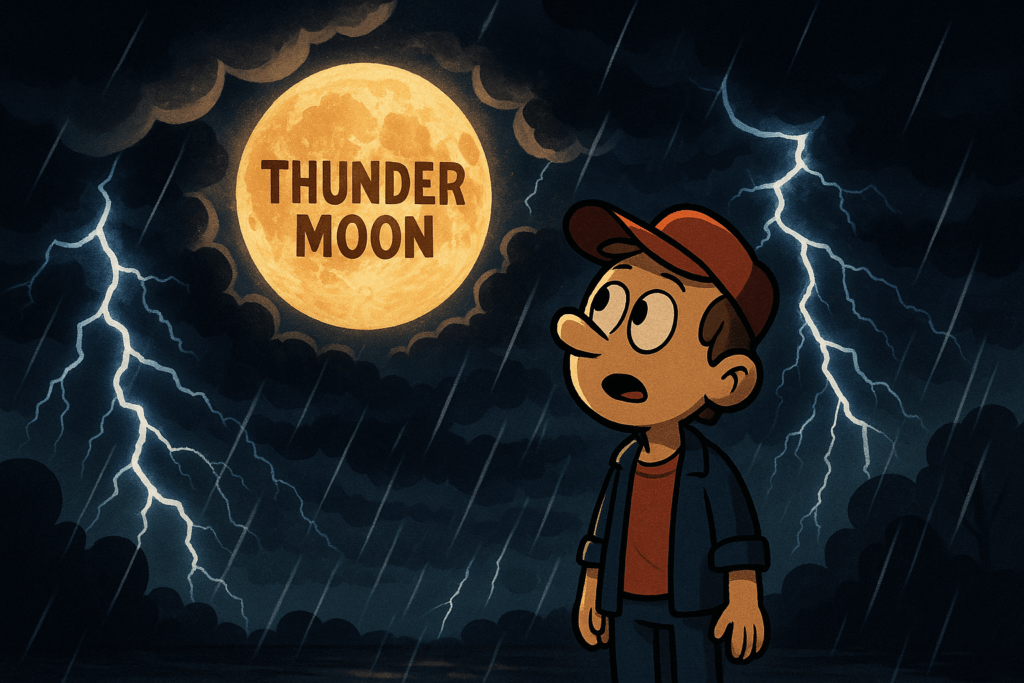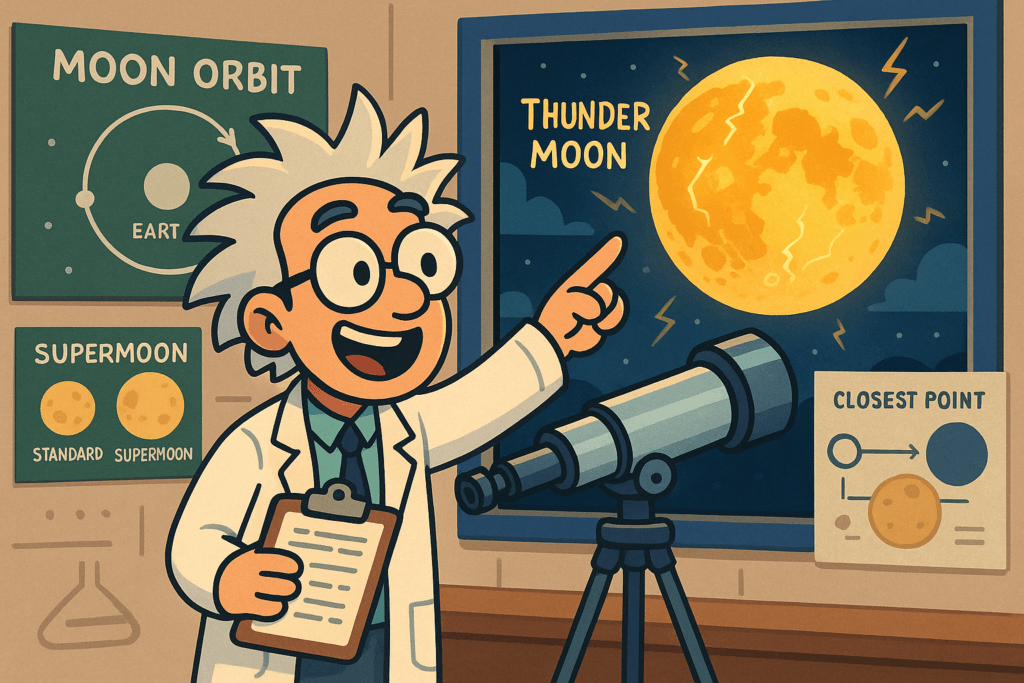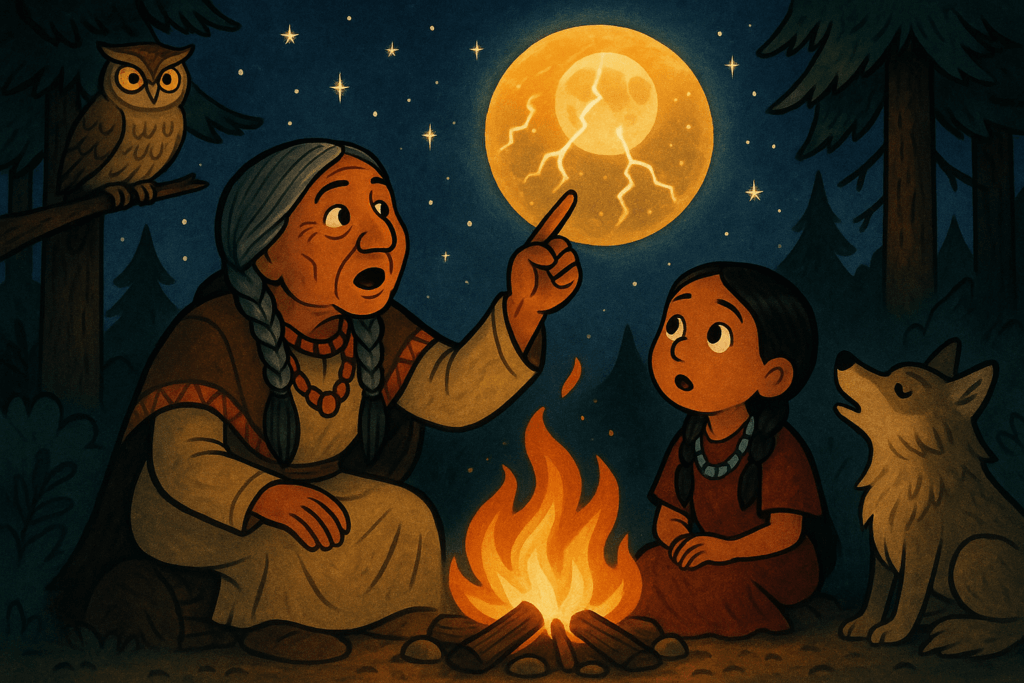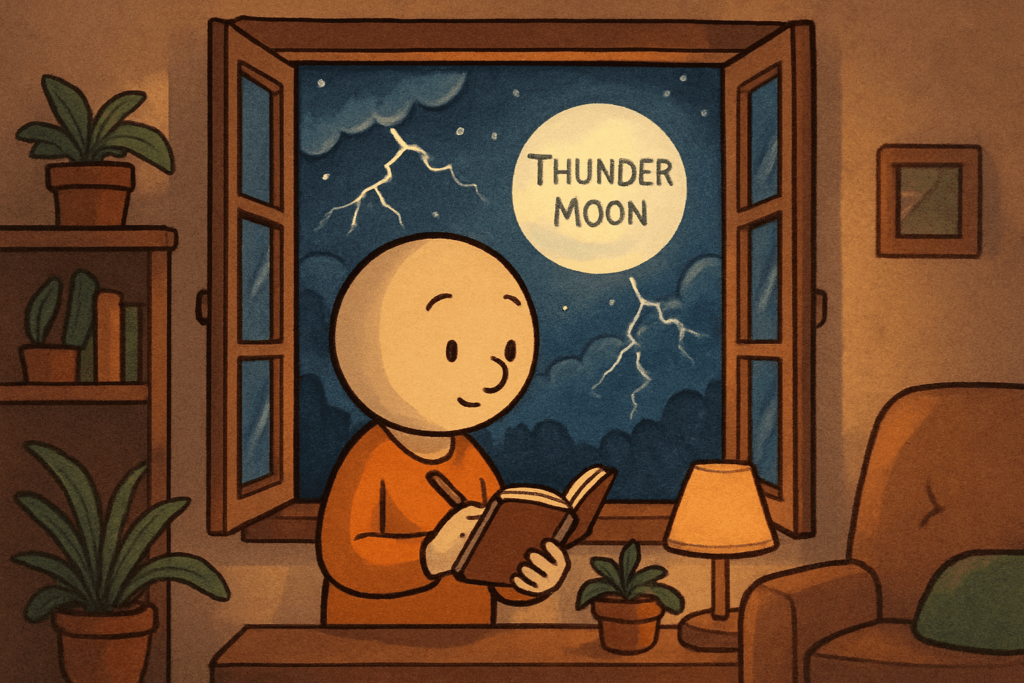This week, a fascinating celestial event will light up the night sky, the Thunder Moon. This rare moon, which occurs every year, will be visible, and it holds special significance both scientifically and culturally. Have you ever wondered why this particular full moon is named “Thunder Moon”? What makes it stand out from other full moons? In this post, we’ll explore the scientific, cultural, and historical importance of the Thunder Moon. Let’s dive into the mysteries of this unique lunar event!
1. Why Is It Called the Thunder Moon?
The Thunder Moon gets its name from the frequent thunderstorms that occur in the Northern Hemisphere during the month of July. This full moon marks the peak of summer storms, with lightning, thunder, and heavy rainfall being a common sight. The name has been passed down through Native American traditions and refers to the time of year when thunderstorms are at their most active.

- Historical Significance: Early Native American tribes used the full moon names as a way to track the seasons. The Thunder Moon was named after the thunderstorms that occur in July, a time when these storms are most frequent. These storms were so significant that they became a cultural marker, symbolizing the power of nature and the changing seasons.
- Think of it like how we associate the rainy season with monsoon in some parts of the world. The Thunder Moon was named for the same reason — because the month of July brings with it storms that shape the natural environment.
2. The Scientific Significance of Thunder Moon
From a scientific perspective, the Thunder Moon is an important event due to its role in our understanding of the moon’s behavior. This full moon is often referred to as a supermoon, as it appears larger and brighter than other full moons. This happens because the moon is at its closest point to Earth during this time, a phenomenon known as perigee.
- Supermoon Effect: The moon’s orbit around the Earth is elliptical, meaning that sometimes it is closer to the Earth than at other times. When the full moon coincides with this closest point in its orbit, it appears bigger and brighter in the sky, earning the title of supermoon.
- Visual Impact: When the Thunder Moon is a supermoon, it can appear up to 14% larger and 30% brighter than when it is at its farthest point in its orbit. This can create a spectacular view, especially if you are in an area with clear skies and minimal light pollution.

Imagine watching a movie on a large screen and then switching to a tiny mobile screen. The large screen gives you a far clearer, more vibrant picture, just as the Thunder Moon’s closer position creates a more striking image in the sky.
3. Thunder Moon’s Impact on Our Cultural Beliefs
The Thunder Moon holds cultural significance in many traditions around the world, especially among Native American tribes. It’s one of the full moons that marks a specific time of year and is associated with various beliefs and activities.
- Native American Traditions: Tribes like the Cherokee and Algonquin named each full moon based on the natural events occurring during that time. The Thunder Moon is associated with the summer thunderstorms that occur in July. For example, the Algonquin Tribe called this moon the “Thunder Moon” because of the loud thunder that accompanied the summer storms. It was a time of renewal and growth, especially for crops.

- Other Cultural Beliefs: In different parts of the world, the full moon, including the Thunder Moon, is often seen as a time for reflection, healing, and setting intentions. In certain cultures, people believed that the moon had the power to influence emotions, behaviors, and natural events.
Just like how we celebrate Diwali to mark the triumph of good over evil, or how the Chinese New Year marks the start of a new lunar cycle, the Thunder Moon has cultural significance in marking the change of seasons, guiding activities like planting crops or reflecting on personal growth.
Why Are There Dew Drops in the Morning? Understanding the Science Behind Dew
4. Best Way to Observe the Thunder Moon
To witness the Thunder Moon in all its glory, finding a dark, clear location is essential. Supermoons, especially the Thunder Moon, appear brighter and more striking when there is little light pollution. The best way to view it is away from city lights, where the moon’s natural glow is not hindered.
- Where to View: The best spots for viewing the Thunder Moon include rural areas, parks, or any open spaces far from artificial lights. If you live in a city, try to find an elevated spot such as a rooftop or a high hill where the moon will be unobstructed.
- Timing: The Thunder Moon will be visible at its peak during the evening or early morning hours, depending on your location. Plan your viewing time based on the moon’s rise time in your area, and make sure to be outside a little before the moon is fully visible to catch the best sight.
Think about watching a sunset from a beach or a mountaintop — the farther you are from distractions, the more beautiful the view. Similarly, finding the right spot for viewing the Thunder Moon will allow you to experience its full majesty.
5. Thunder Moon’s Effect on Our Mental and Emotional State
There’s something almost magical about the Thunder Moon, as its bright and powerful light can have a subtle impact on our emotions and mental state. Many people feel more energetic, reflective, or even anxious during a full moon, and the Thunder Moon is no different.

- Increased Energy: The bright light of the full moon is thought to affect the human body’s circadian rhythm, leading to an increase in energy and emotional sensitivity. People might feel more alert, creative, or even restless under its influence.
- Symbol of Transformation: In many cultures, the full moon is seen as a time for transformation. It’s believed that the energy of the moon helps us release negative thoughts and embrace change, making the Thunder Moon a perfect time for personal growth and self-reflection.
Just like how some people feel energized during the daytime when the sun is high, the full moon’s bright light can give a burst of energy during the night, prompting a surge of creativity or emotional clarity.
Conclusion
The Thunder Moon is more than just a beautiful celestial event; it has deep cultural significance, scientific importance, and emotional impact. Whether you’re gazing at the sky to witness the supermoon or reflecting on its symbolism, the Thunder Moon is a powerful reminder of the natural forces that shape our world. It’s a time for reflection, growth, and a reminder that nature’s cycles continue to guide us in ways we may not always understand but always appreciate.
Why is the Thunder Moon so significant?
The Thunder Moon is significant because it marks the time of year when summer thunderstorms are most common. Its cultural significance comes from the strong natural events associated with it, like thunder and lightning.
When is the best time to view the Thunder Moon?
The best time to view the Thunder Moon is during the evening or early morning hours, preferably in a location away from city lights to see its full brightness.
Does the Thunder Moon have any impact on human behavior?
Yes, many people feel more energetic, emotional, or restless during the full moon. The bright light of the Thunder Moon can affect our mental and emotional states, leading to increased energy or moments of clarity.
Is the Thunder Moon different from other full moons?
Yes, the Thunder Moon is special because it occurs during the month when thunderstorms are most likely to happen, and it also appears larger and brighter due to its proximity to Earth, making it a supermoon.
